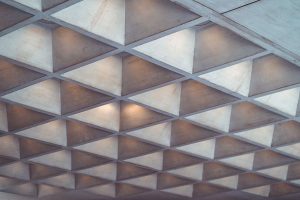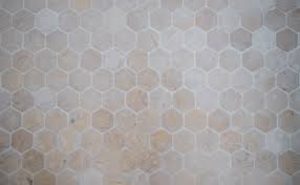The ceiling cover is added to the ceiling to provide the decorative look, hide projections such as underfloor slab beams, have a fake ceiling, produce unique acoustic effects, hot and cold insulation, etc.
What is the significance of installing ceiling coverings?
The ceiling cover is added to the ceiling to provide the decorative look, to hide projections such as underfloor slab beams, to have a fake ceiling, to produce unique acoustic results, heat, and cold insulation, etc.
What form of ceiling coating is best?
Gypsum boards and Plaster of Paris are the best types of ceiling covers regarding all factors such as cost, maintenance, appearance, and durability.
- Plaster of Paris Ceiling & tiles
- Gypsum plasterboard
- Insulated board
- Hardboard
- Plywood and blackboard
- Asbestos cement building board
- Cloth Ceiling
- Aluminum sheet ceiling
- Expanded polystyrene ceiling
- Timber Ceiling
Fixing of Ceiling Covers
Material Specification: The insulating building boards can be particle boards (low density) or insulating boards with fiber. The thickness of 4 to 10 mm is used for plywood boards and the spacings can range from 450 to 600 mm for longitudinal battens and 600 to 1200 mm for cross battens; for boards over 10 mm wide, the spacings can differ from 600 to 900 mm for longitudinal battens and from 900 to 1300 mm for cross batts.
The nails used to fix the boards must be long enough to cover the board thickness plus 25 mm. If the joints are left exposed, the material of the nails used must preferably be galvanized-made.
Fixing Specification:
- While the joints are to be sealed, while revealed, the boards shall be spaced 3 to 6 mm apart and mounted to the rear.
- The boards are first nailed to intermediate framing participants continuing outwards from the middle of the frame, the edges are last nailed.
- The nail rows in the center of the sheet are to be at centers of 20 mm. The nails on each side of the outer rows shall be combined and not spaced. The nails shall be countersunk in the underside of the board.
- Where joints are to be sealed with beading, the technique is the same as before, except that the 200 mm spaced nail can be placed in the outer line.
- The outer row of nails shall be at 100 mm from the centers and about 12 mm from the edge of the surface at the points where the joints are visible.
- The boards are cut to the required size, and to make them smooth, the edges must be slightly sandpapered.
- The frame with battens, varying in size from 60 to 75 mm, is then set.
- Then the construction board shall be fixed with lengths parallel to all joints centered above the framing members.
Plaster of Paris:

- In the case of sloping roofs, wooden battens of an appropriate section are to be firmly fixed by means of bolts and nuts as main supports to the underside of the beams at the required centers.
- Throughout the case of flat roofs, handled battens must be firmly fastened to the walls and pillars by pressing down bolts and fixed with iron braces or mild steel bars secured in them to the slabs above.
- The 50 mm x 40 mm cross battens at around 400 mm centers are then fastened to the central battens at the correct angles. The underside of the frame is equal to planes and slopes.
- In parallel rows of felt screws, wooden stripes or laths 25 mm x 6 mm shall be fastened to the cross battens.
Rabbit wire mesh shall be fixed to the underside of wooden strips with rails of a pitch of 150 mm to 200 mm.
Plaster of Paris Tiles:

- Plaster of Paris tiles shall have a thickness of not less than 12 mm. Hessian cloth must have an open webbed texture.
At 200 mm centers, the tiles can be fastened to the cross battens with 40 mm long brass screws. - The tiles may be placed adjacent to each other without any gap left.
- The screws need to be at least 15 mm from the tip.
- The countersunk screw heads shall be coated with Paris plaster and completed in a smooth fashion.
At 200 mm centers, the tiles can be fastened to the cross battens with 40 mm long brass screws. - The tiles may be placed adjacent to each other without any gap left.
- The screws need to be at least 15 mm from the tip.
- The countersunk screw heads shall be coated with Paris plaster and completed in a smooth fashion.
- The maximum dimensions of the panels in each direction shall be limited to 750 mm.
The timber or aluminum frame shall be constructed in such a way that each tile has supporting scantlings to fix it.
Cloth Ceiling:
- The materials used for the cloth ceiling frame shall be high-quality bamboo.
- The frame is securely spiked onto the plaster/ceiling joints or beams of the wall.
- The fabric shall be wetted, spread, and fixed to the top of the frame.
Check on ceiling covers
- For structural strength and stability the wooden or metal structure, consisting of longitudinal bearers and cross-bearers in which the ceiling board is assisted, shall be constructed.
- Double ceiling boards shall be provided in such places as air conditioning and cold storage rooms.
- At appropriate spacings, the ceiling board’s first layer may be fastened to the ceiling with plugs or other repairing tools in the concrete slabs.
- The suspenders from RCC slabs shall be of ample duration to hit the ceiling frame and sustain the foundation for a false ceiling.
- The ceiling boards, which have a mass of less than 5 kg / m2, can be fixed directly to






